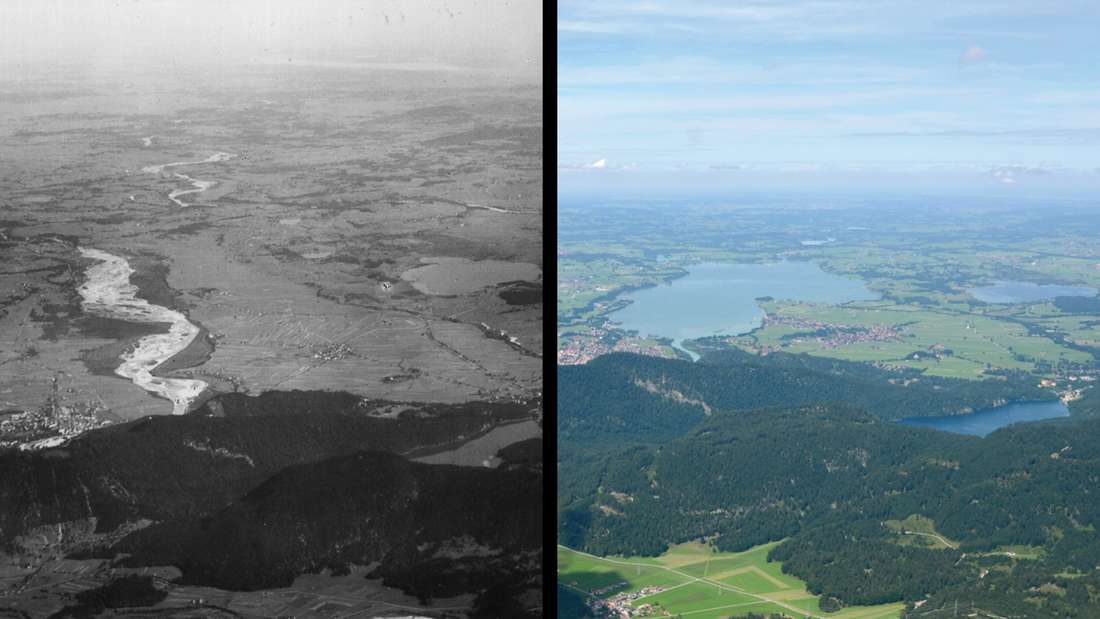Forggensee 70 Years: Fascination and Sunken Hamlets
The Lech tumbles through the mountains in a narrow, rocky bed. It pours onto the Bavarian plateau at the town of Füssen and turns north. In times not so long past, where it met level terrain, it spread out into a braided river, flowing around narrow islands, as it meandered toward the Danube.

During the time of Ludwig II, from the bridge behind the old Hohenschwangau ruins—and later the castle construction site—the view of the plateau beyond was not unlike the view today. The braided river Lech ran through the far half along the length of today’s Forggensee.
The Bayerische Wasserkraftwerke (Bavarian waterworks) dammed the Lech river near Roßhaupten /rose-HOWP-ten/ in 1954 to form Germany’s largest reservoir and fifth largest lake. Its purpose: to regulate runoff from spring rain and snowmelt, and so prevent flooding, and to generate electricity. It is the second barrage on the Lech. The first is at Füssen, where the river skirts the town. These are part of a system of more than two dozen barrages that regulate water flow between the Alps and the Danube.
The reservoir is called the Forggensee. See, in German, means lake, and Forggen is the name of a village that now lies beneath the lake’s surface. Several families were moved out of the village before it was drowned. Modern settlements also drowned were Deutenhausen and parts of Weidach (in Füssen), Brunnen (Schwangau), Dietringen, and Dürracker. These are accompanied at lake bottom by ancient sites: the ruins of a Roman villa and a few kilometers of a Roman road, the Via Claudia Augusta.
“Fascination Forggensee” (Faszination Forggensee)
To catch spring rains and melt water, the lake is partially drained in the winter. With the water at its lowest annual levels in March and April, historian Magnus Peresson guides tours into the muddy lake bed. He shows the exposed features, including the Roman ruins and foundations of homesteads, and he tells stories about the people who lived there.

I followed Peresson’s tour last April. Not only a historian, Peresson is also an architect. Walking among washed-out ruins, he points to a rectangle where walls once stood. “That was the kitchen,” he says, “see that pipe?” And where a wide wooden timber lay level with the mud, “That was the threshold to the stable.”
Look for “Faszination Forggensee” led by Magnus Peresson at Allgäu Schlosspark.de in late winter and early spring into April.
“Sunken Hamlets” (Versunkene Weiler)
At the moment in Schwangau is an exhibit about the submerged villages, now 70 years gone. Curators Ernst Walz and Christine Velle put together an impressive display of photographs, graphics, newspaper articles, and accompanying text that show the area as it was before and during the dam’s construction.


You can see “Sunken Hamlets” at the Schlossbrauhaus in Schwangau, Saturdays, Sundays, and Wednesdays, 17:00-20:00, until 5 November, and 1 November 14:00-17:00.
